




As a purpose-led company, we know we have a pivotal role to play in addressing the climate emergency. We consider this not only good business, but our duty to channel our technology-enabled expertise and capabilities toward benefitting people and the planet.



We work in partnership, delivering some of the most challenging, diverse and innovative projects and programs globally across multiple sectors. We integrate complex interfaces across planning, procurement and delivery to help unlock better social, environmental and economic outcomes from mega and giga projects.



For more than 30 years, Jacobs has been responsible for planning and implementing Lead and Copper Rule-related strategies which protect millions of people in the U.S. and Canada. Our work includes enhanced water quality monitoring strategies, sampling plan development, harvested pipe-scale analysis, lead service line inventories and replacement plans, corrosion control studies and the incorporation of equity and environmental justice considerations into compliance programs.



As our clients navigate the digital transformation and growing cyber risks, we have positioned ourselves at the forefront of this growth, adding digital capabilities, products and tools to serve a growing set of customers.



Sit down with our visionary team of thinkers, dreamers and doers to see what a day in the life is like.



A curated selection of some of the top-listened to and trending podcast episodes from our popular If/When podcast series, which has over 7M downloads to date.



Together with our visionary partner, PA Consulting, we're establishing our position in high end advisory services, creating a springboard to expand in high value offerings beyond the core.


At Jacobs, we're challenging today to reinvent tomorrow by solving the world's most critical problems for thriving cities, resilient environments, mission-critical outcomes, operational advancement, scientific discovery and cutting-edge manufacturing, turning abstract ideas into realities that transform the world for good. With approximately $16 billion in annual revenue and a talent force of more than 60,000, Jacobs provides a full spectrum of professional services including consulting, technical, scientific and project delivery for the government and private sector.



Jacobs. A world where you can.



As climate change threatens water security around the world, more communities are turning to water reuse as a resilient water supply solution and embracing the OneWater principle that all water has value. Jacobs has been supporting clients with water reuse programs for decades, beginning with the first applications of advanced wastewater treatment technologies in the 1960s. We provide our clients with a full range of services, from water reuse feasibility studies to design, construction and operations.



The only certainty about the future is uncertainty. Resilience is an attribute of a smarter planet, and requires planning and adapting ahead of potential threats. We help our clients survive, recover, adapt and thrive.



Jacobs is working to help clients across the United States secure federal funding for projects that make our cities and communities more connected and sustainable. Working hand-in-hand with clients from coast to coast and everywhere in between, Jacobs develops bold, innovative solutions to address the nation’s toughest challenges.



Now more than ever, we appreciate the hard work, sacrifice and dedication of the medical profession in ensuring the health and safety of our communities.



Together, we are stronger. Together, we can transform the future.



We’ve provided design-build services to the water sector for over 25 years and delivered more than 150 projects. We offer fully integrated design-build and design-build-operate capabilities to tackle the most complex water challenges and work in close collaboration with our clients.



Stories that capture our partnerships and innovative impact for a more connected, sustainable world


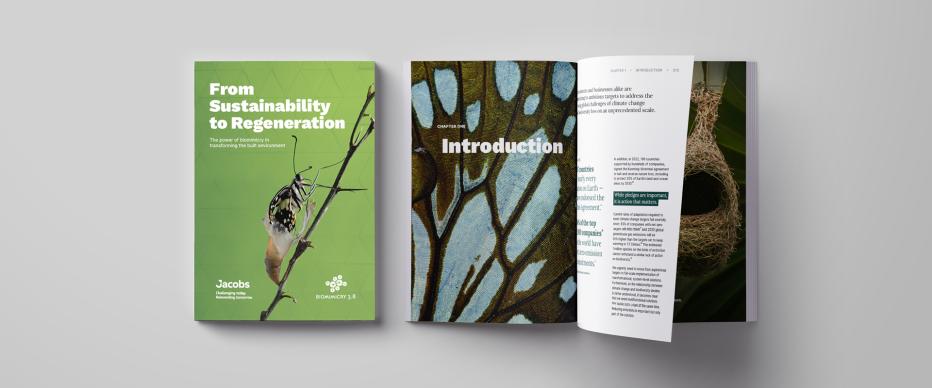
Over 3.8 billion years, evolution has yielded one of the most advanced, untapped, publicly available research and development labs on the planet. Having discarded more than 99% of species in the process, the remaining 1% provide innovative blueprints, recipes and well-adapted best practices to design, build and create.
It’s not wishful thinking to see the built environment as part of nature. Through biomimicry, the built environment can help recover ecosystem functions and services, eventually transforming humanity’s relationship with the rest of nature into one that’s reciprocal and beneficial.
In our latest paper, written in collaboration with Biomimicry 3.8, we invite you to open your mind and heart to the big picture, expand your thinking and discover how we can transform the ever-expanding built environment from a threat to climate stability and biodiversity to a showcase for a regenerative world.

While pledges are important, when it comes to reversing climate change and nature loss, it’s action that matters — and our actions currently fall woefully short.
Governments and businesses are committing to ambitious targets to address the growing global challenges of climate change and biodiversity loss on an unprecedented scale. Despite some impressive statistics however, the current rate of action is falling woefully short of what it needs to deliver. On our current trajectory, 2030 global greenhouse gas emissions will be 55% higher than the targets set to keep warming to 1.5 degrees Celsius.[1]
As both a key contributor to climate change and a sector significantly impacted by a changing climate, the built environment presents an enormous opportunity for positive impact — on nature and for communities.
countries have endorsed the Paris Agreement [2]
of the world's top 2,000 companies have net zero emissions commitments [3]
of companies will miss their emissions reduction targets based on current trends [4]
countries have signed the Kunming-Montreal Agreement to halt and reverse nature loss [5]

Over the period of 3.8 billion years, nature has found the most effective and efficient solutions to the vast majority of challenges we face.
Biomimicry is a design and innovation approach that learns from nature’s genius and applies its blueprints, strategies and best practices to improve and invent solutions that create the conditions conducive for all Life to thrive.
When applied to the built environment, biomimicry produces design solutions that mirror the life-supporting benefits, also known as ecosystem services, created by intact habitats. This results in facilities that positively contribute to the ecosystems in which they operate, as measured by the ecosystem services they produce, generating social and environmental benefits such as improved air and water quality, increased carbon sequestration and biodiversity. The aspirational goal is for buildings to function like local intact ecosystems, producing the same benefits as the wildlands next door.
“We need to stop being apart from nature and start being a part of nature.”
David Attenborough
A life on Our Planet: My Witness Statement and a Vision for the Future
“When the forest and the city are functionally indistinguishable, then we know we’ve reached true sustainability.”
Janine Benyus
Co-Founder, Biomimicry 3.8

The Positive Performance Methodology is an assessment and innovation methodology that embraces biomimicry as a pathway to more sustainable and regenerative design.
Developed by Biomimicry 3.8, the methodology presumes buildings — and whole cities for that matter — can and must function like nature. Using local intact ecosystems as a source of inspiration and the benchmark against which future performance is measured, it guides organizations and design teams to develop place-based, regenerative design solutions that deliver a wide range of performance outcomes for ecosystems, communities and businesses.

An overview of Biomimicry 3.8's Positive Performance Methodology

In addition to the environmental benefits, the need for nature-informed design is supported by a strong business case.
Continued inaction on decarbonization and climate change could cost the world $178 trillion in economic losses by 2070.[6] Conversely, nature positive pathways could create over $3 trillion in business opportunities and 117 million jobs in the next decade alone.[7]
Mandatory reporting of exposure to environmental risks is shifting the flow of financial capital in favor of businesses taking genuine action to lower their impact. Nature-informed design supports businesses to improve their environmental, social and governance (ESG) performance, thus reducing their impact, and deliver on commitments to other strategic initiatives such as the United Nations Sustainable Development Goals.
At an operational level, nature-informed design can help businesses generate immediate cost savings and operational efficiencies, unlock new areas of competitive advantage with suppliers across the supply chain and revitalize their social license to operate.
global economic value generation that moderately or highly dependent on nature [8]
reported global economic losses from climate and water related hazards between 1970 and 2019 [9]
potential global GDP gains of limiting global warming to close to 1.5 degrees Celsius [10]

Achieving net zero emissions by 2050 and going beyond that—reaching a positive future—isn’t just an aspirational goal. It’s an imperative. Realizing it will require a fundamental shift in the way we think about, design and engineer the built environment.
Ecological balance and human progress are not mutually exclusive. They are intrinsically interconnected, and the design philosophies and innovations we choose to adopt today will define our future legacy.
As an approach and innovation pathway that delivers inherently regenerative solutions, biomimicry can help us create a future where the built environment is a catalyst for ecological regeneration, well-being and human advancement, setting new benchmarks for generations to come.
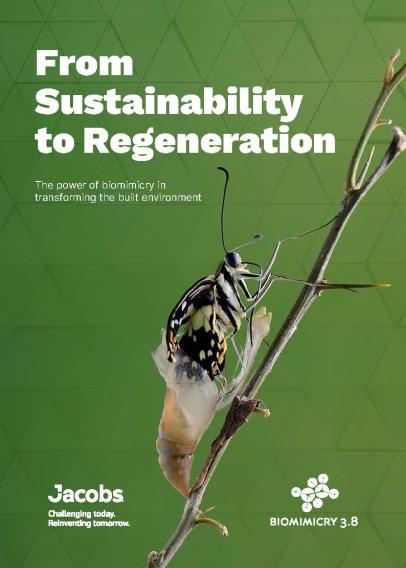
From sustainability to regeneration: The power of biomimicry in transforming the built environment
(PDF, 11MB)
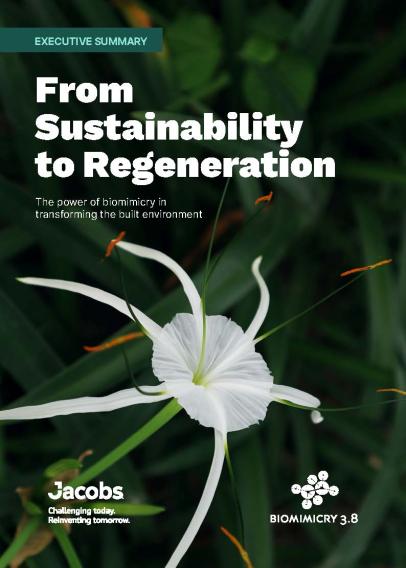
From sustainability to regeneration: The power of biomimicry in transforming the built environment - executive summary
(PDF, 1MB)

Meet Christopher Allen
Global Principal - Regenerative & Nature-based Solutions
Biomimicry 3.8 is the world’s leading biological intelligence firm offering innovation services, strategic consulting, professional training, and thought leadership to support the development of sustainable and regenerative products, processes, places, and organizations. More information about Biomimicry 3.8’s innovation and consulting services, workshops, training, and featured Ted Talks can be found at Biomimicry.net
Introducing Project Positive
Project Positive is a group of organizations dedicated to raising the bar on what acting sustainably means — driven by a sense of urgency to move beyond arbitrary reduction goals, to science-based targets and actions that are generous to the ecosystems, employees and communities in which we operate.
The group has completed more than 20 large-scale projects so far, demonstrating that factories, headquarters, campuses, cities and urban developments can be redesigned to deliver ecosystem services, support ESG goals and compliance reporting, achieve a social license to operate, and elevate employee engagement and stakeholder trust.
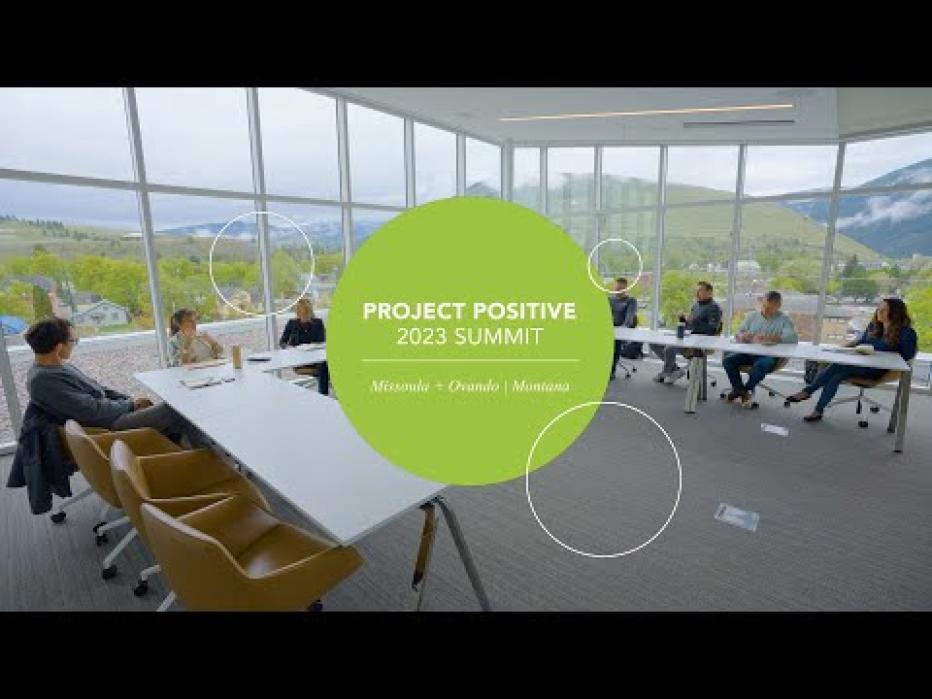
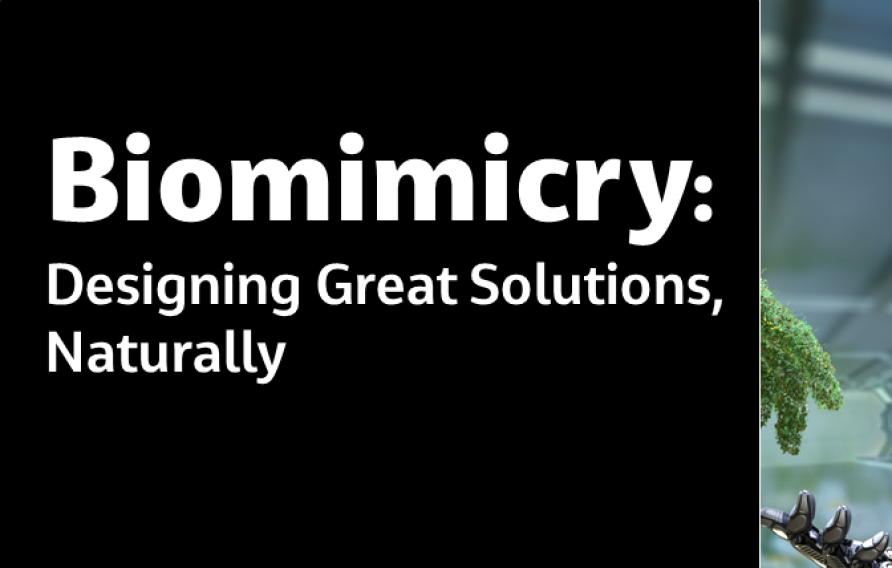

For this episode of If/When, we explored the exciting world of biomimicry and why it matters for the Built Environment, with special guests Managing Director, Biomimicry 3.8 Nicole Hagerman Miller; Jacobs Vice President – Global Market Director for the Built Environment Monte Wilson; and Jacobs Senior Consultant – Sustainability & Resiliency Chris Allen.

It’s time to think differently about the future — about how we prepare for and respond to natural, societal and economic risks. Jacobs delivers comprehensive infrastructure, technology and intelligence solutions to help governments, cities and private sector clients survive, recover, adapt and thrive regardless of the chronic stresses and acute shocks they experience.


Climate change is truly one of the greatest challenges and opportunities of our generation. There isn’t an area of the world, a business or government, a community or individual that won’t be impacted. How we collectively respond will determine the ultimate success in building a healthier, safer, more sustainable and resilient future for all people and our planet.